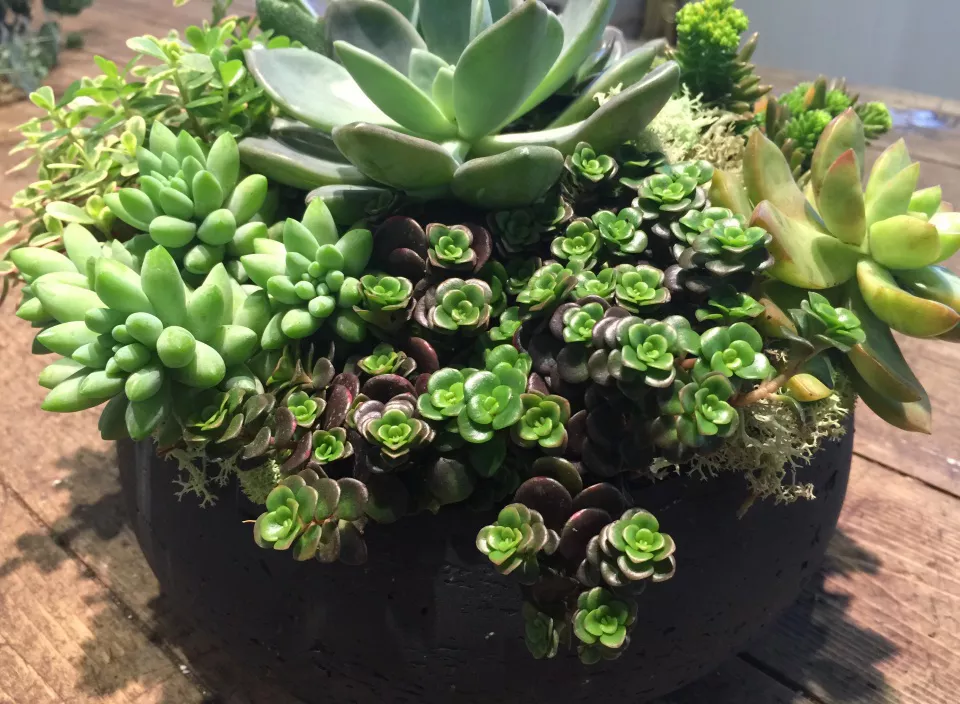Succulents have gained immense popularity in recent years due to their unique appearance, low maintenance requirements, and ability to thrive in small spaces. Planting succulents in small containers is an excellent way to create miniature gardens that add a touch of natural beauty to any indoor or outdoor setting. This article aims to guide gardening enthusiasts on the best practices for successfully cultivating succulents in compact planters. We will explore various topics, including suitable container selection, essential planting techniques, proper watering and sunlight requirements, and tips for maintaining healthy succulent arrangements. By following these guidelines, you can transform small containers into stunning displays of lush and vibrant succulents.
Selecting the Right Containers
Choosing the appropriate containers for your succulents is crucial to their overall health and growth. Here are some factors to consider when selecting small containers:
1. Size and Depth
Select containers that provide ample room for the succulent’s roots to spread and grow. A depth of at least 2 to 3 inches is recommended to accommodate the root system. However, ensure the container isn’t too large, as succulents prefer snug spaces.
2. Drainage
Proper drainage is vital for succulents, as they are susceptible to root rot in waterlogged conditions. Look for containers with drainage holes or be prepared to create them yourself.
3. Material
Containers can be made of various materials, such as ceramic, terracotta, or plastic. Each material has its advantages; for example, terracotta allows for better airflow, while plastic retains moisture longer. Choose the material that best suits your succulent’s needs and your climate.
Planting Techniques for Success
Now that you have the right containers, let’s explore essential planting techniques to ensure your succulents thrive:
1. Soil Selection
Use well-draining soil specially formulated for succulents and cacti. Avoid standard garden soil, as it retains too much moisture and can lead to root rot. Commercial succulent mixes or DIY blends with sand, perlite, and potting mix work well.
2. Propagation
You can start your miniature succulent garden by propagating from cuttings or planting small succulents. To propagate, gently remove healthy leaves or stems from a mature plant and allow them to callus for a day or two before planting.
3. Planting Procedure
Dig a small hole in the soil using a spoon or your fingers, ensuring it’s deep enough to accommodate the roots. Place the succulent in the hole and gently pat the soil around it. Ensure the plant sits at the same depth as it was in its original container.
4. Arrangement and Spacing
Create an aesthetically pleasing arrangement by considering the colors, shapes, and sizes of the succulents. Leave enough space between the plants to allow for their natural growth without crowding each other.
Watering and Sunlight Requirements
Proper watering and sunlight are essential for the health and longevity of your small succulent garden:
1. Watering Tips
Succulents store water in their leaves, stems, or roots, making them drought-tolerant plants. Here are some watering tips:
Allow the Soil to Dry: Before watering again, ensure the soil is completely dry. Stick your finger about an inch into the soil – if it feels dry, it’s time to water.
Water Sparingly: Overwatering is a common mistake. Succulents prefer infrequent but deep watering. Water until it starts to drain from the bottom of the container, then let the excess water escape through the drainage holes.
Avoid Wetting the Leaves: Water the soil directly, avoiding contact with the leaves, as excess moisture on leaves can cause rot.
2. Sunlight Requirements
Succulents are sun-loving plants, and they need bright, indirect sunlight for optimal growth. Here’s what you need to know about sunlight:
Indoor Placement: Place your small succulent garden near a sunny window where they can receive at least 4-6 hours of sunlight per day.
Outdoor Location: If you keep your succulents outdoors, provide them with morning sunlight and some shade during the hottest part of the day to prevent sunburn.
Maintenance and Troubleshooting
Maintaining healthy succulents in small containers involves ongoing care and monitoring. Here are some tips to ensure your miniature garden thrives:
1. Fertilization
Succulents generally do not require frequent fertilization, but you can use a balanced, diluted liquid fertilizer during their active growth period, typically in the spring and summer months. Follow the manufacturer’s instructions for application.
2. Pruning
Remove dead or wilted leaves to maintain a neat appearance and prevent the spread of diseases.
3. Pests and Diseases
Keep an eye out for common pests like aphids, mealybugs, and spider mites. Treat infestations promptly with insecticidal soap or neem oil. Additionally, watch for signs of root rot and address it immediately by adjusting your watering habits.
4. Seasonal Adjustments
During colder months, succulents may require less water and could benefit from additional protection against frost. Move them indoors or provide adequate shelter as needed.
Conclusion
Planting succulents in small containers can be a delightful and rewarding experience. By selecting the right containers, using proper planting techniques, and providing adequate sunlight and water, you can create thriving miniature gardens that add beauty to any space. Remember to monitor your succulents regularly, addressing any issues promptly to ensure their continued health and vitality. With the information provided in this guide, you are now equipped to embark on your succulent gardening journey, transforming small containers into captivating displays of nature’s wonders.


